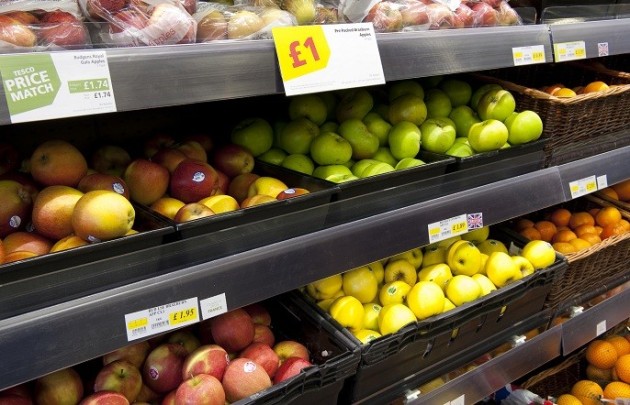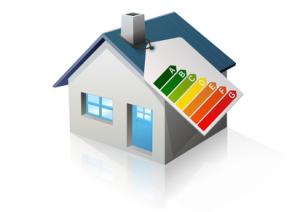LED lighting is relatively new technology. I have tried many products and can confirm price does not always guarantee quality!
Last week I spent a day at MHA lighting, UK based LED lighting design and manufacturing Company based in Atherton, near Wigan.

I was really pleased to see the passion for excellence in all products supplied. The design and manufacturing process is all undertaken on one site. Every stage of production is followed by testing. MHA can provide a 5 year guarantee because every product has been tested at least 6 times before it’s dispatched from the factory. Excellent attention to detail, a real confidence boost for the installer and end user Customer.
MHA have experience in a wide range of applications from ships to deserts, they produce electronic products to withstand the most rugged environments. All products have a ambient temperature range from -35 C to + 55 C.
A 5 Year guarantee for all products is provided because MHA lighting understand the technology and design products to last.
Check out the MHA lighting website for details of Customer testimonials. http://www.mhalighting.co.uk/

Fresh produce looks better with good quality lighting
I am offering the MHA lighting range for all relevent applications in leisure, retail and healthcare applications. I will visit your site, undertake a free of charge detailed lighting survey and talk with you to establish your needs and see what can be done to save you money.

Product range displayed to best advantage with excellent lighting
Correctly designed and installed lighting can improve product shelf life, increase Customer confidence and drive up spending levels for your business.
We can look at a range of financing options so you can have improved lighting without increasing bottom line spending.

The following tables and photos give further details of the MHA Lighting range. MHA Lighting also offer bespoke design and production services. This is excellent for the retrofit applications as it may be possible to reuse existing enclosures to hold the LED lighting modules.
Please call 07901 380746 or 01782 504503 to discuss your requirements and to arrange a free lighting survey. You can also e-mail me at ecologic@gmx.co.uk.
MHA Lighting Product Range
QuarterLite – External
MHA Lighting’s award-winning QuarterLite combines high quality, uniformly distributed light with energy savings of up to 80%.
The entire range delivers clean, bright light to create the highest levels of illumination whilst slashing energy bills and CO2 emissions.
Our patented QuarterLite technology provides a light output of more than 400 Lumens using just 4 watts and has been designed as a direct replacement for fluorescent tubes and inferior LEDs.
The QuarterLite is the perfect solution for lighting internal and external advertising signs, illuminated company names and large format billboards.
All QuarterLites are supplied with a five year guarantee.
|
The benefits:
|
|
Efficiency
|
Typically uses 80% less energy than conventional back-lit solutions.
|
|
Zero Maintenance
|
Reducing costs and disruption of routine maintenance – often at height.
|
|
Lifespan
|
A useful lifetime of 60,000 hours.
|
|
Light Distribution
|
Uniformly distributed glare-free light which achieves LG Standards Lux Levels.
|
|
Directionality
|
Ghost-bands and flicker is eliminated.
|
|
Shock resistant
|
QuarterLites do not break or explode like traditional fittings.
|
C Lite – External

MHA Lighting C70
MHA Lighting’s award-winning C Lite combines high quality, uniformly distributed light with energy savings of up to 80%.

MHA Lighting C100
The entire range delivers clean, bright light to create the highest levels of illumination whilst slashing energy bills and CO2 emissions.

MHA Lighting C140
The C Lite is the perfect solution for internal and external applications of heights ranging between 4 and 9 metres. It is a recessed behind a fascia of polycarbonate, acrylic or toughened glass and is easy to clean and maintenance free during its 60,000 hour lifespan. It is available in a range of wattage and sizes depending on the application.
External applications:
Tunnels
Canopies
Roads
Floodlighting
Internal applications:
Manufacturing
Warehouses
Retail sheds
Shopping malls
Concourses.
The light is delivered in 5500 Kelvin, 65CRI for precision working but can be delivered in a variety of colours to suit your requirements. The fittings also include intelligent controls such as ambient sensor or dimmer to further maximise energy savings.
The C Lite is designed using MHA Lighting’s patented LED technology and complies with all British Standards. The range is EU Energy rated A and achieves LG standard LUX levels. It typically replaces 150-400 watts low and high bay fittings
|
The benefits:
|
|
Efficiency
|
Can achieve up to 80% energy savings compared to traditional fittings
|
|
Zero Maintenance
|
Reducing costs and disruption of routine maintenance
|
|
Lifespan
|
A useful lifetime of 60,000 hours.
|
|
Light Distribution
|
Uniformly distributed glare-free light which achieves LG Standards Lux Levels
|
|
Reliability
|
C Lites are robust and do not break or explode like traditional fittings
|
|
PSU Specifications
|
90-277 Volts AC DALI / DMX options available
|
|
No Heat
|
Perfect for air-conditioned environments or open refrigerators
|
|
Specifications:
|
|
LED Type
|
Philips Rebel (ES)
|
|
Colour Rendering
|
65 CRI
|
|
Colour Temperature
|
Other colour temperatures are available upon request
|
|
Product Type
|
Available with a glass, acrylic or polycarbonate cover
|
|
Warranty
|
Five to seven years depending upon operating hours
|
|
Housing Type
|
Surface mounted, chain suspended, recessed or trunking mounted
|
|
Emergency Options
|
Integrated emergency options available in either standard battery pack or 110 volts AC
|
|
Output Content
|
450mA
|
|
Operating Temperature
|
-35 to +55C
|
|
Variants:
|
|
Intelligent controls
|
Manual dimmers, PIR sensors, Photocells, voltage optimisation, power conditioning etc.
|
RodLite – Internal

MHA Rodlite, the clever flourescent replacement
The RodLite GRP provides a direct low-energy LED replacement for fluorescent tubes – with all the benefits of LEDs.
The RodLite GRP’s patented LED technology creates glare-free uniformly distributed light and achieves LG Standards Lux levels – but typically uses 80% less energy. It is ideal for any internal or external application where fluorescent tubes are currently being used and is available with a variety of covers including prismatic diffusers to provide the same aesthetics as a fluorescent fitting.
For external applications such as multi-storey car parks, construction sites and subways the RodLite GRP is vandal-proof and is Ingress Protected. It is suited to heights of 2.4 to 8 meters and typically replaces 4,5,6,7 and 8 foot fluorescent tubes. The RodLite GRP will appeal to those customers who want to replace fluorescent tubes, whilst still achieving the same light output quality as well as the energy savings of LED.
RodLites can be used with power conditioning, voltage optimisation and intelligent controls such as dimmers, ambient settings and PIR sensors. The entire range is designed using MHA Lighting’s patented LED technology and complies with all British Standards. The range is EU Energy rated A and achieves LG standard LUX levels.
|
The benefits:
|
|
Footnotes
|
|
Efficiency
|
Can achieve up to 80% energy savings compared to traditional fittings
|
|
Zero Maintenance
|
Reducing costs and disruption of routine maintenance
|
|
Lifespan
|
A useful lifetime of 60,000 hours
|
|
Light Distribution
|
Uniformly distributed glare-free light
|
|
Directionality
|
Light spillage and light pollution are removed by using reflectors.
|
|
Shock resistant
|
RodLites are robust and do not break or explode like traditional fittings
|
|
PSU Specifications
|
90-277 Volts AC DALI / DMX options available
|
|
Thermal Management
|
A heat sink design for reduced heat emissions for temperature controlled environments.
|
|
Specifications:
|
|
LED Type
|
Philips Rebel (ES)
|
|
Colour Rendering
|
80 CRI as standard for internal applications and 65CRI as standard for external applications
|
|
Colour Temperature
|
3500 / 4000 / 4500 for internal applications and 5000 / 5500 for external applications
|
|
Product Type
|
Metallic, Acrylic and Polycarbonate
|
|
Warranty
|
Five to seven years depending upon operating hours
|
|
Housing Type
|
Surface Mounted, Chain Suspended, Recessed, Retrofit, Trunking Mounted
|
|
Ingress Protection
|
IP66 available upon request
|
|
Emergency Options
|
Integrated emergency options available in either standard battery pack or 110 volts AC (to work with a back-up generator system)
|
|
Output Content
|
450mA
|
|
Operating Temperature
|
-35 to +55C
|
|
Variants:
|
|
Retrofit design
|
This uses the existing housing and facia
|
|
Complete Unit
|
Identical to the Retrofit product but is recessed behind its own cover and uses its own mounting brackets
|
|
Intelligent Controls
|
Manual dimmers, clocks, PIR sensors, Photocells, voltage optimisation, power conditioning etc
|
| Product Code |
LEDs Fitted
|
Wattage
|
Luminous Flux
|
Lumen Output
[including inefficiencies]
|
|
C70 – C100 600mm x 600mm x 135mm
|
|
C70
|
60/120 lumen
|
82
|
7200 lumens
|
6120 lumens
|
|
C80
|
70/120 lumen
|
95
|
8400 lumens
|
7140 lumens
|
|
C90
|
80/120 lumen
|
107
|
9600 lumens
|
7968 lumens
|
|
C100
|
90/120 lumen
|
123
|
10800 lumens
|
8640 lumens
|
|
C140 1200mm x 600mm x 135mm
|
|
C140
|
120/120 lumen
|
164
|
14400 lumens
|
11952 lumens
|
| Product Code |
LEDs Fitted
|
Wattage
|
Luminous Flux
|
Lumen Output
[including inefficiencies]
|
|
600mm x 600mm x 75mm
|
|
TiLite 20
|
16/100 lumen
|
24
|
1920 lumens
|
1327 lumens
|
|
TiLite 30
|
24/100 lumen
|
34
|
2400 lumens
|
2017 lumens
|
|
|
|
|
|
|
|
1200mm x 600mm x 75mm
|
|
Double TiLite 30
|
24/100 lumen
|
62
|
2400 lumens
|
2017 lumens
|
|
Double TiLite 60
|
48/100 lumen
|
68
|
4800 lumens
|
4034 lumens
|
| Product Code |
LEDs Fitted
|
Wattage
|
Luminous Flux
|
Lumen Output
[including inefficiencies]
|
|
Rodlite 16
|
16/120 lumen
|
23
|
1920 lumens
|
1656 lumens
|
|
Rodlite 20
|
20/120 lumen
|
29
|
2400 lumens
|
1999 lumens
|
|
Rodlite GRP 24
|
24/120 lumen
|
34
|
2880 lumens
|
2448 lumens
|
|
Rodlite GRP 30
|
30/120 lumen
|
45
|
3600 lumens
|
3139 lumens
|
|
Rodlite 40
|
40/120 lumen
|
53
|
4800 lumens
|
3984 lumens
|
|
Rodlite 30
|
48/120 lumen
|
62
|
5760 lumens
|
4608 lumens
|


















